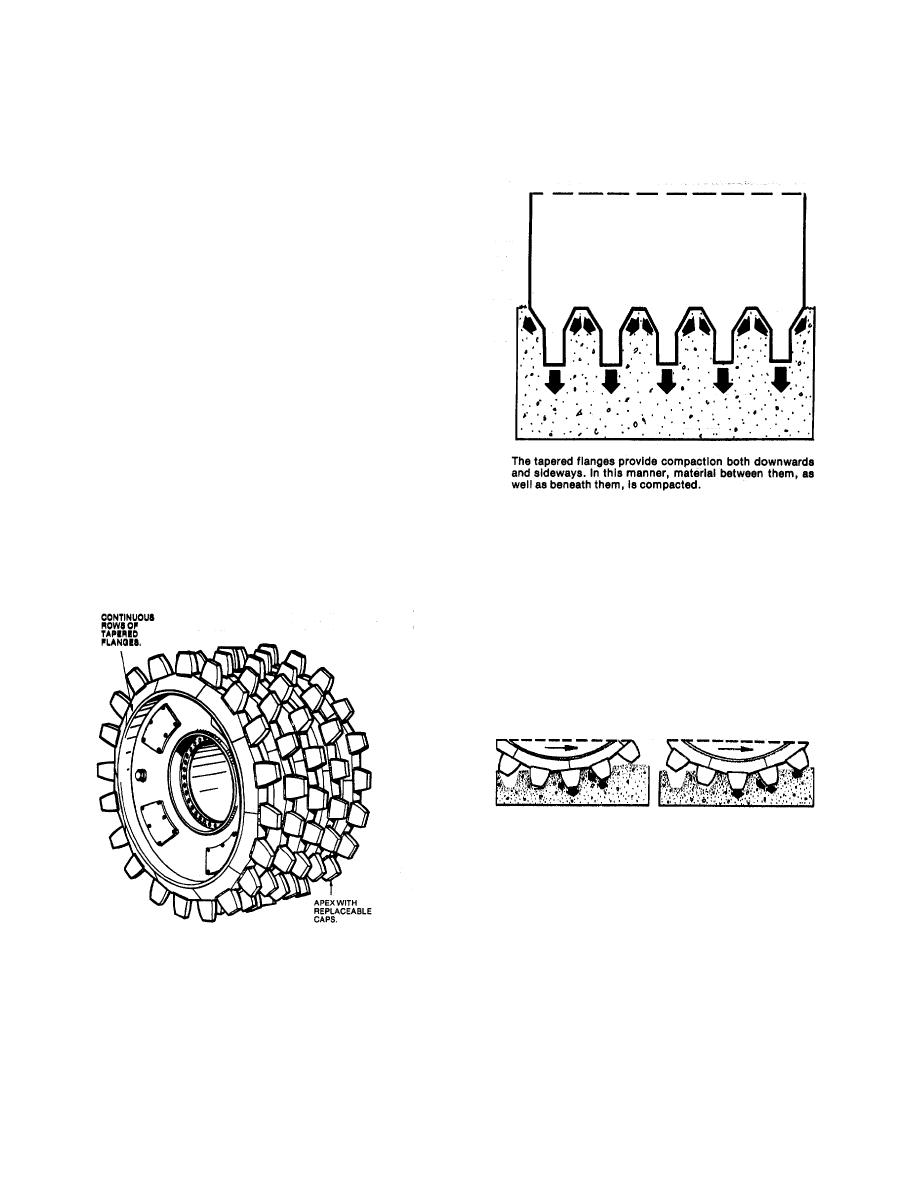 |
|||
|
|
|||
|
Page Title:
LIFT THICKNESS / NUMBER OF PASSES: |
|
||
| ||||||||||
|
|
 COMPACTION:
densities from being attained and the moisture content
Responsible for this versatility is the shape of the wheel
may have to be reduced by aeration prior to compaction.
flanges. The tapered edges of these flanges exert pressure
laterally as well as downward, allowing the machine to "walk
out" in fewer passes.
LIFT THICKNESS / NUMBER OF PASSES:
The greatest increases in density occur within the initial
five passes, depending upon soil and field conditions.
Additional passes may produce only slight gains, or even
be detrimental. Generally, the lift thickness varies from 6
to 12 Inches (15 to 30 cm), depending upon conditions.
While there are no set rules, we would recommend
starting with a 6" (15 cm) lift and plotting achieved
densities versus the number of passes. Increase the
depth of lift in three inch (7,6 cm) Increments until you
find the optimum combination of lift thickness and number
of passes for the particular conditions. Care should be
exercised in compaction to avoid selecting such a deep
lift that bridging of the bottom of the lift occurs. When the
proper combination has been determined, one must be on
the lookout for changes In soil type and moisture content.
If proper control is maintained, consistent compaction
throughout the Job will be achieved.
COMPACTION / MACHINE OPERATION:
Segmented compaction wheels produce higher surface
pressures and exert a combination of Impact and
kneading action on the soil. The BOMAG K300 Pakall
wheels provide great versatility In soil compaction. Soils
ranging from sandy loams to heavy clay may be com-
pacted with relative ease.
As the wheel sinks Into uncompacted soil, the tapered
flanges offer a large amount of bearing area to prevent
over-stressing the soil when there Is low shear resistance.
As soil density Increases, the wheel begins to "walk out",
riding progressively higher on the wheel flanges,
concentrating the compactive force on Its narrow ridges and
finally on the apexes.
As the flanges turn, they penetrate the loose soil. Pressure
is at first exerted both angularly on the leading load-bearing
surface and downward on the trailing load-bearing surface.
The compactor's full weight is applied downward when the
apex reaches Its point of deepest penetration. When, upon
further rotation, the apex is withdrawn, the compacted soil is
left undisturbed. Shearing is kept to a minimum.
Rev. 760501
K300
300-1.2
|
|
Privacy Statement - Press Release - Copyright Information. - Contact Us |